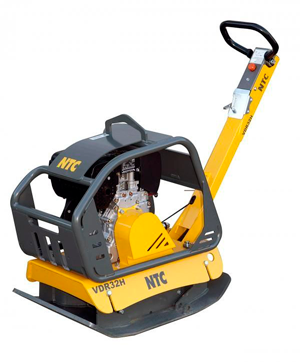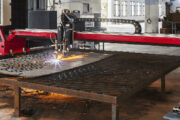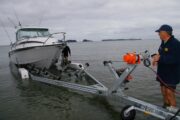The plate compactor is used to compact asphalt and any type of soil and gravel on driveways, repair jobs, parking lots, etc. It is very useful in areas where larger compactors cannot fit. These machines consist of a heavy steel plate which is mounted on the base of the machine and bears. The core is a flat and heavy plate, driven or vibrated by a diesel or gasoline engine. When you need to choose the right plate compactor, few factors need to be considered.

Plate compactors can be divided in three main categories: a single-plate compactor, a reversible plate compactor and a high-performance/heavy-duty plate compactor. The choice mainly depends on the size and type of the job. The single-plate compactor moves forward only and is the most popular choice for small asphalt jobs. The reversible plate compactor on the other hand, moves both forward and in reverse. Some models can also operate in a hover mode. For sub-base or deeper depth compaction, either reversible plate compactor or a high-performance/heavy-duty plate compactor can be used.
The plates of a plate compactor are measured in width which ranges from 35 to 60 centimeters. However, the width is not the only element that needs be considered when selecting the right plate compactor. The centrifugal force is also an important factor. The smaller plate compactors generate up to almost 2,000 kg of centrifugal force efficient enough for compacting granular soil, hot-mix asphalt and crushed aggregate. Other elements such as weight, amplitude, etc. also contribute to the overall performance of a plate compactor, which is why the user must carefully review included specifications before buying one.
Another factor that needs to be considered is the eccentric frequency (vibrations per minute). For cohesive soil compaction, lower eccentric frequencies are suggested, while for granular materials and asphalt, the higher eccentric frequencies are required. The reversible plate compactor usually has a high eccentric frequencies as it is meant for deeper depth compaction. The reversible plate compactor is perfect for granular materials and cohesive soils since it is easy to operate, has low maintenance cost and a long service life.
The shape of the base plate also affects the efficiency of the compaction. If the plate is curved, the maneuverability is easier and prevents the plate from getting in contact with the asphalt. To find out if the plate is curved, you can look underneath plate’s center to the edging. It might be hard to notice, but it is important to know for working in tight places. For hot mix asphalt jobs, you may consider the idea of getting a reversible plate compactor that comes with a water tank. The water tank creates a barrier between the hot asphalt and the reversible plate compactor, preventing the asphalt from sticking to the plate. One of the latest features in plate compactors is the anti-vibration handle, which cuts down the vibration and creates greater comfort.
Make sure you know how to use a reversible plate compactor properly and how to maintain it. Also, always follow the instruction manual that comes along with every compactor. When selecting a plate compactor, make sure you choose the one that meets all your requirements for the job and has the features that will help you achieve the best results.


